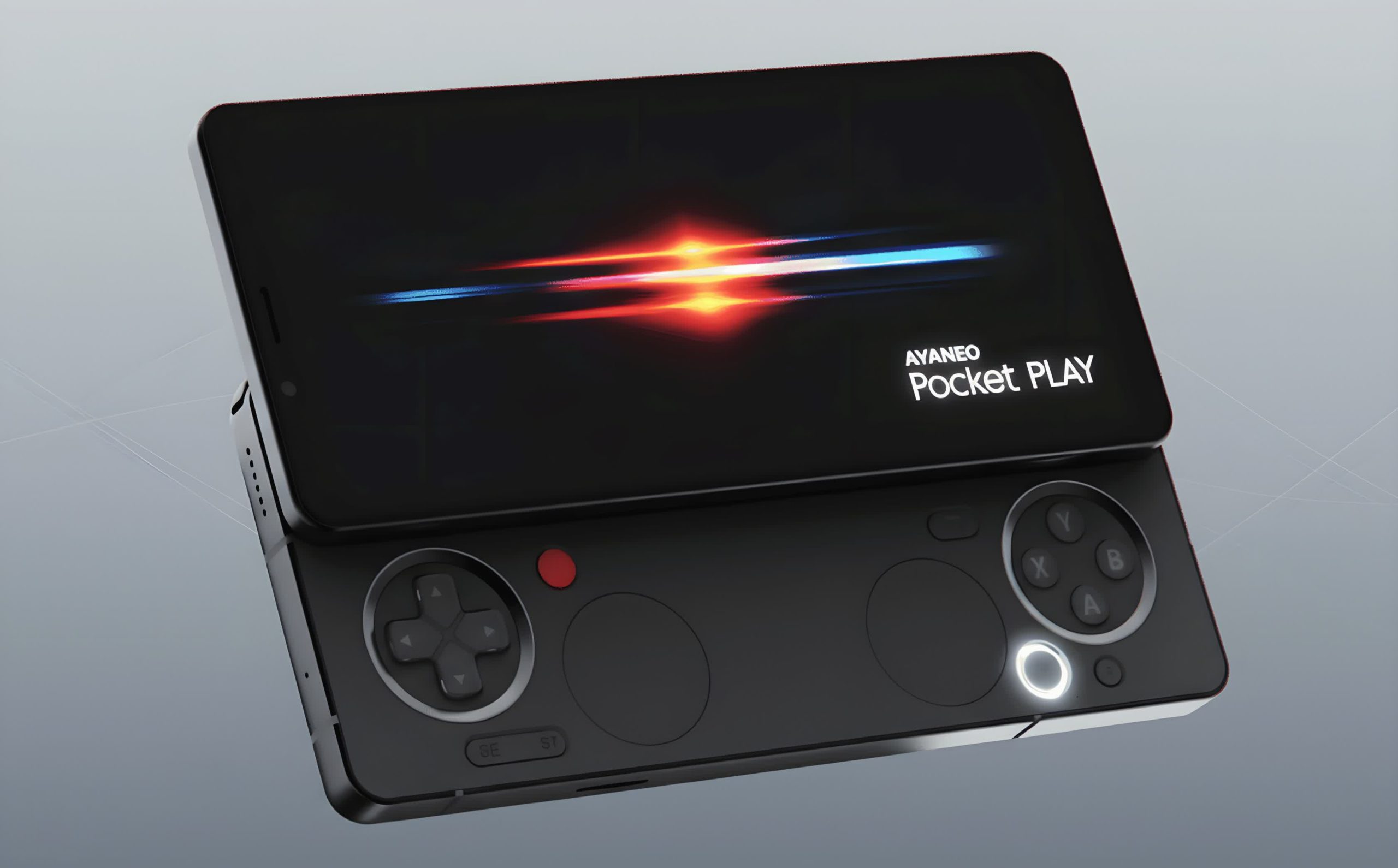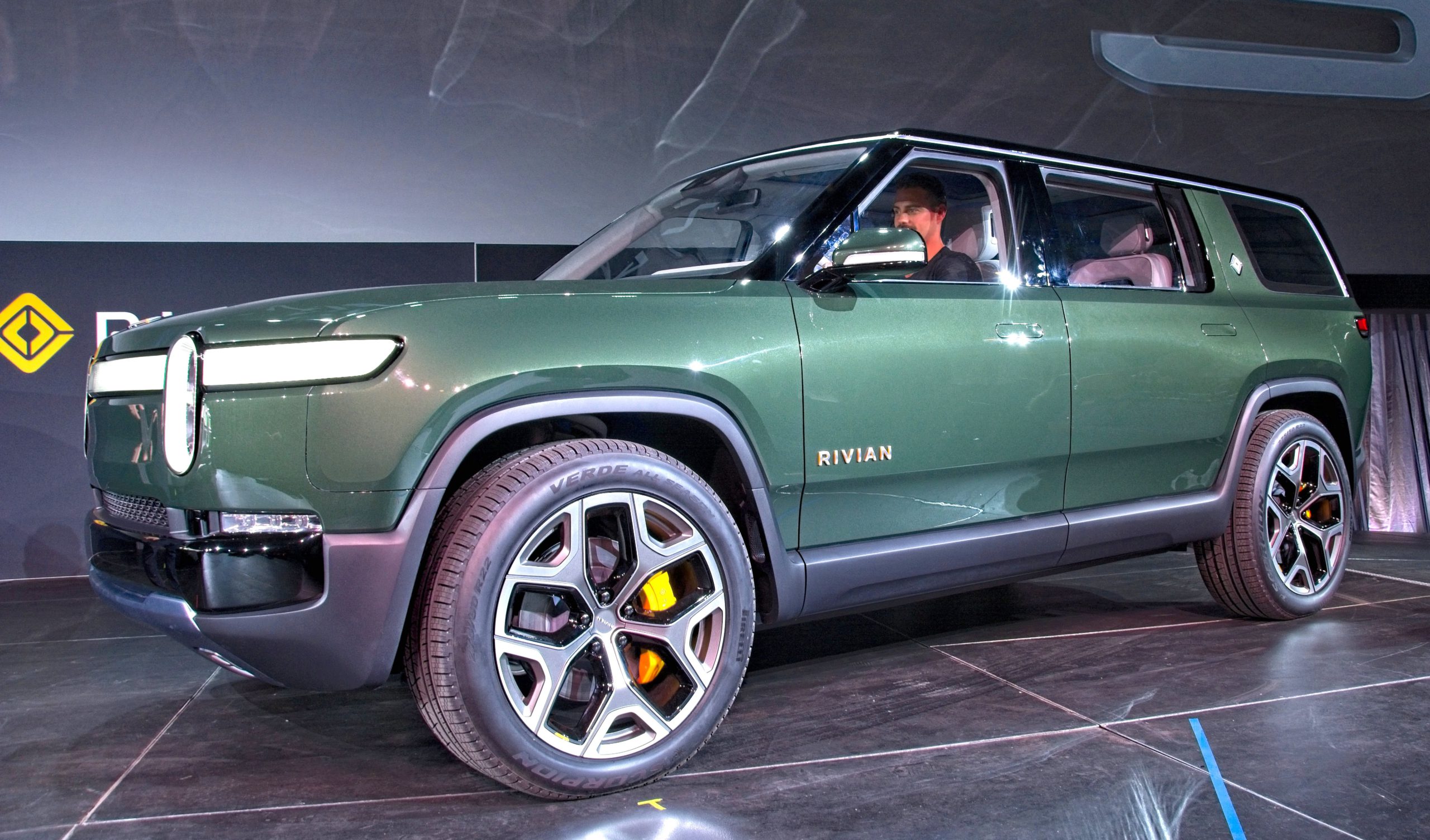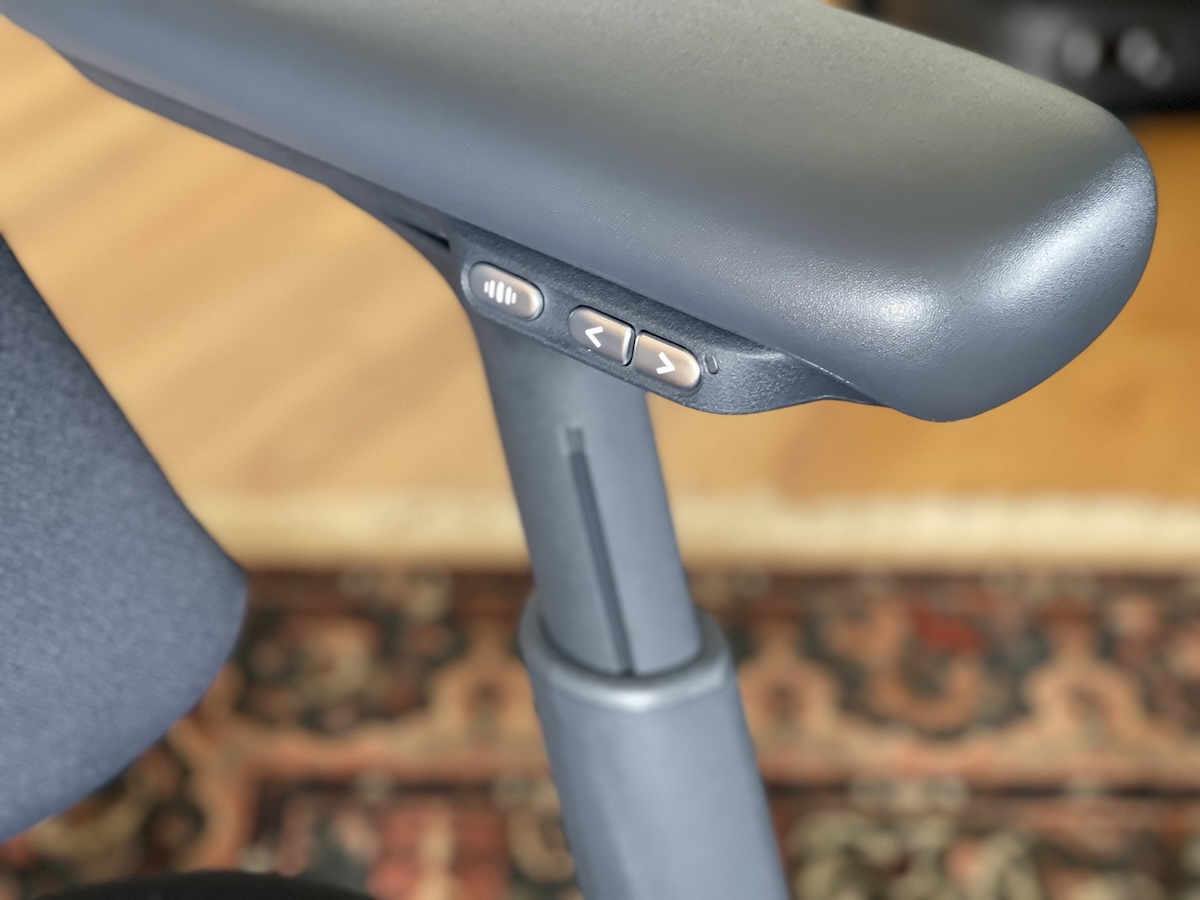Automotive history isn’t just about successful models that shaped our highways. Hidden beneath the mainstream narrative lurks a wonderland of bizarre prototypes that engineers somehow convinced management to greenlight. These mechanical misfits — equal parts ambition and absurdity — reveal what happens when designers chug too much coffee at midnight and accountants take vacations.
According to historians at Hemmings Motor News and road test editors at Car and Driver who’ve extensively documented these curiosities, these vehicular oddities span from well-intentioned safety pioneers to alien spacecraft disguised as cars. Each represents that magical moment when someone asked “What if?” and nobody sensible responded “But why?” Ready for a tour through automotive history’s most fascinating failures? Buckle up, though these seatbelts might be theoretical.
21. 1933 Dymaxion Car (Exterior)

Buckminster Fuller’s Dymaxion resembled a teardrop dirigible on wheels. The aerodynamic body featured a tapering rear end with a dramatically pointed tail. Unlike conventional cars, the Dymaxion featured three wheels, with two at the front and a single rear wheel that handled all steering duties. At nearly 20 feet long, the aluminum body presented a streamlined profile previously seen only in aircraft design. The distinctive rear stabilizer fin helped maintain directional stability, similar to aircraft design principles, while the front featured large, chromed headlights integrated into a blunt nose.
The Dymaxion’s cabin could accommodate up to 11 passengers in its spacious interior — remarkable efficiency for its footprint. The driver sat in a front-centered position with excellent forward visibility through the expansive windshield. The steering wheel connected directly to the rear wheel through an unusual linkage system, creating a driving experience unlike any conventional automobile. Spartan by modern standards, the interior nevertheless featured innovative modular seating that could be reconfigured for different passenger and cargo needs. Large side windows provided abundant natural light, creating an airy feel despite the enclosed cabin.
20. Lancia Stratos HF Zero

The Stratos Zero presented an automotive impossibility — a wedge-shaped blade standing just 33 inches tall. Bertone’s creation completely rejected traditional car proportions, with its windshield meeting the hood at a perfectly straight line. The entire front section consisted of a single triangular plane with integrated headlights appearing as mere slits in the bodywork. With no conventional doors, the entire windshield and roof section hinged upward to allow entry. The rear featured horizontal slats covering the engine compartment, while the rear wheels were partially covered, enhancing the dramatic wedge profile.
Entering the Zero required a unique procedure — as the front canopy lifted, occupants had to slide feet-first into the reclining seating position. Once inside, drivers faced a minimalist dashboard with only essential gauges and switches. The steering wheel sat uncomfortably close to the windshield, requiring arms to be almost fully extended while driving. There was virtually no headroom, with occupants’ heads positioned just inches below the glass canopy. The confined cockpit wrapped around passengers like a snug glove, with no extraneous space and extremely limited storage. Visibility was severely compromised, especially to the rear, making the Zero a triumph of design over practicality.
19. 1970 Ferrari 512S Modulo

The Modulo represented geometric perfection in automotive form. Its perfectly flat planes intersected at precise angles, creating a shape more architectural than automotive. Standing just 37 inches tall, the canopy-style roof appeared to float above the body. The most distinctive feature was the fully covered wheels, with only small arcs of the tires visible through geometric cutouts in the bodywork. Twenty-four holes in the engine cover revealed glimpses of the V12 engine below, while the zero-radius edges between body panels created impossibly precise lines that conventional manufacturing couldn’t easily replicate.
Inside, the Modulo presented a spacecraft-like cockpit with spherical seats seemingly floating above the floor. The dashboard comprised a simple flat panel with circular instruments arranged in a clean, minimalist fashion. Entry required the entire canopy to slide forward on rails — there were no conventional doors. The steering wheel featured an unusual asymmetrical design with a straight lower edge, while the controls were arranged in orbital clusters rather than traditional layouts. Two perfectly formed bucket seats provided minimal comfort but looked appropriately futuristic for a vehicle that appeared ready for interstellar travel rather than highway cruising.
18. Nissan S-Cargo (Exterior)

The S-Cargo’s deliberately whimsical design took the shape of its namesake snail, with a rounded, bubble-like front transitioning to a boxy rear cargo area. Circular headlights resembled snail eyes, while the curved greenhouse created an unmistakable silhouette. The compact dimensions (only 147 inches long) made it perfect for navigating tight urban environments. Despite its playful appearance, practical features included sliding side doors for easy loading in tight parking spaces and a large rear hatch for cargo access. Optional portholes on the sides of the cargo area reinforced the nautical/mollusk theme.
Nissan S-Cargo (Exterior)

Inside, the S-Cargo balanced whimsy with utility. The upright seating position provided excellent visibility through the expansive windshield. The dashboard featured a simple, curved design with basic instrumentation and minimal controls. The flat cargo floor could accommodate substantial loads despite the vehicle’s compact exterior dimensions. The gear selector mounted on the dashboard freed up floor space, while clever storage compartments maximized utility. Front seats could be folded completely flat, creating a bed-like surface when combined with the rear cargo area — a feature that hinted at the van’s potential for both work and leisure activities.
17. 1958 Sir Vival Car

The 1958 Sir Vival Car resembled a conventional sedan that had undergone bizarre surgical modifications. Its most distinctive feature was the raised driver’s turret that protruded from the main passenger compartment like a tank cupola. The front engine compartment was deliberately separated from the passenger section by visible structural gaps, creating an unusual two-box appearance. Heavy reinforced bumpers surrounded the vehicle, while the overall profile suggested a standard 1950s sedan that had been modified by someone with unconventional safety theories and limited aesthetic concerns.
Inside, the Sir Vival Car’s most unusual feature was its rotating driver’s seat mounted in the raised turret. This positioning gave the driver excellent visibility but created a disconnected feeling from the rest of the vehicle. The passenger compartment featured extensive padding on all surfaces and an early implementation of energy-absorbing structures. The dashboard eliminated sharp edges and protruding knobs in favor of recessed, padded controls. Despite these safety innovations, the interior lacked conventional restraint systems like seat belts, revealing the incomplete understanding of crash dynamics that characterized the era.
16. AMC Gremlin (Exterior)

The Gremlin’s most distinctive feature was its abruptly truncated rear, creating a profile that looked like a normal car until about two-thirds of the way back, where it ended with a near-vertical tail. This chopped-off appearance resulted from AMC literally shortening their Hornet platform rather than designing a purpose-built small car. The long hood maintained traditional American proportions despite the compact overall length. Large single headlights flanked a simple rectangular grille, while the dramatically sloped rear window doubled as a hatch for cargo access. Optional body-side stripes and bold colors attempted to disguise the awkward proportions through graphic distraction.
AMC Gremlin (Interior)

Inside, the Gremlin offered surprisingly spacious front seating for a subcompact, maintaining the comfort expected of American cars despite its reduced dimensions. Rear passengers weren’t so fortunate, with the shortened wheelbase creating tight quarters and limited legroom. The dashboard featured a simple, horizontal design with basic instrumentation and minimal frills. When equipped with the optional V8, the interior included sportier details including a floor-mounted shifter and additional gauges. The rear cargo area offered reasonable space with the rear seats folded, though the high load floor and narrow hatch opening limited practicality compared to purpose-built hatchbacks.
15. AMC Pacer (Exterior)

The Pacer’s exterior defined “fishbowl on wheels” with its massive glass area and unusual proportions. The car’s width nearly matched full-size sedans while its length remained compact, creating a distinctively bulbous appearance. The hood sloped dramatically downward, while the rounded greenhouse created a continuous arc from front to rear. The asymmetrical doors — the passenger door was four inches longer than the driver’s side — added to the unconventional appearance while improving rear passenger access. Flared wheel arches and a gently tapered rear end completed the distinctive shape that looked like nothing else on American roads.
AMC Pacer (Interior)

Inside, the Pacer leveraged its unusual width to create a remarkably spacious cabin for a compact car. The dashboard stretched wide across the interior, with instruments clustered in front of the driver and the passenger area featuring a large grab handle that doubled as a design element. The expansive glass area created excellent visibility in all directions but turned the interior into a greenhouse on sunny days, making air conditioning essential rather than optional. Front bucket seats and a rear bench provided seating for four adults in reasonable comfort, while interior materials featured the characteristic textures and colors of 1970s automotive design, including patterns and hues that would never appear in modern vehicles. If you’re fascinated by these automotive oddities, you’ll love this roundup of oddball car prototypes that pushed the limits of design and left lasting impressions, despite rarely reaching production.
14. 1956 Buick Centurion

The Centurion concept showcased jet-age styling taken to dramatic extremes. Its fiberglass body featured a dramatic red and white color scheme with pronounced tail fins and rocket-inspired rear lighting. The most striking feature was the complete bubble top roof constructed entirely of transparent plexiglass, creating an unbroken glass canopy from windshield to rear window. The front end featured a distinctive oval grille opening flanked by recessed headlights, while the rear employed dramatic jet exhaust-inspired taillights. Chrome trim accented the body lines, following the aviation-inspired aesthetic that dominated 1950s concept design.
Inside, the Centurion presented a cockpit-inspired layout that reinforced the aeronautical theme. Four individual bucket seats featured red upholstery that contrasted dramatically with the white exterior. The instrument panel substituted a television monitor for the traditional rearview mirror, displaying images from a rear-mounted camera decades before backup cameras became common. The steering wheel featured a distinctive two-spoke design with a central hub reminiscent of aircraft controls. The transparent roof eliminated the need for a conventional headliner, creating an open, airy feeling that contrasted with the typically enclosed cabins of production vehicles from the era.
13. Cadillac Cimarron (Exterior)

The Cadillac Cimarron exterior revealed its humble origins despite Cadillac’s attempts at differentiation. The compact three-box design maintained the same basic profile as the Chevrolet Cavalier it was based on, with only minor styling changes to suggest premium positioning. A Cadillac-specific grille featuring the brand’s crest and a revised front fascia provided minimal distinction from its economy car siblings. Additional chrome trim and slightly revised taillights completed the modest visual upgrades, while optional alloy wheels attempted to elevate the appearance. The compact dimensions — significantly smaller than traditional Cadillacs — further emphasized the model’s outlier status in the luxury brand’s lineup.
Cadillac Cimarron (Interior)

Inside, Cadillac attempted to justify the Cimarron’s premium pricing with standard leather seating — a genuine luxury feature in the early 1980s — and upgraded door panels with additional padding and wood-look trim. The dashboard architecture remained identical to the Cavalier, with added woodgrain appliqués and slightly revised gauges providing minimal differentiation. Later models received more substantial interior upgrades, but the compact dimensions remained unchanged, providing less passenger space than Cadillac customers expected. The interior represented the model’s most substantial upgrade over its Chevrolet sibling, but these improvements proved insufficient to disguise the Cimarron’s economy car foundations.
12. Vector W8 (Exterior)

The Vector W8’s exterior represented automotive brutalism at its finest. Sharp angles and origami-like creases defined the body, with a dramatically low profile standing just 44 inches tall. Aircraft influences appeared throughout the design, from the jet fighter-like canopy to NACA ducts feeding air to the engine. The massive rear width accommodated huge tires necessary to handle the twin-turbo V8’s power. Scissor doors hinged upward for dramatic effect, while the engine remained visible beneath a glass cover, showcasing the meticulously arranged mechanical components. Every body panel was handcrafted from carbon fiber and Kevlar, materials still considered exotic in the early 1990s.
Vector W8 (Interior)

Inside, the W8 presented an aircraft-inspired cockpit that reinforced its aerospace origins. The driver faced three CRT screens displaying digital instrumentation instead of conventional gauges — technology rarely seen in road cars of the era. The center console bristled with aircraft-style toggle switches protected by military-spec covers to prevent accidental activation. The steering wheel featured an unusual rectangular design, while the seats offered minimal padding in race car fashion. Luxuries were few, with the interior focused entirely on the technical experience of controlling the vehicle. Even starting the engine required a specific sequence of switch activations, reinforcing the jet fighter experience for owners lucky enough to afford the $450,000 price tag.
11. Vector M12

The Vector M12 maintained the sharp-edged wedge profile of its W8 predecessor but with subtle changes necessitated by its Lamborghini Diablo underpinnings. The scissor doors remained, opening upward in dramatic fashion, while the overall silhouette maintained the low, wide stance essential to supercar presence. Compared to the W8, the M12 featured slightly softened angles and more conventional detailing, reflecting its more production-oriented approach. Large side intakes fed air to the midmounted V12 engine, while the front featured distinctive rectangular headlights. The rear end showcased a transparent engine cover displaying the Lamborghini V12 powerplant — the M12’s most authentic exotic car feature.
Inside, the M12 abandoned much of the W8’s aircraft-inspired eccentricity in favor of a more conventional supercar interior. The leather-wrapped dashboard featured traditional analog gauges rather than the digital displays of its predecessor. Lamborghini-sourced components appeared throughout the cabin, from switchgear to climate controls, creating an interior that felt more Italian than American. The seating position remained low and aggressive, with limited visibility typical of supercars of the era. While more luxurious and conventional than the W8’s cockpit, the M12’s interior still prioritized the technical driving experience over comfort, with minimal sound insulation and an ever-present V12 soundtrack dominating the cabin.
10. Bricklin SV-1 (Exterior)

The Bricklin SV-1’s wedge-shaped body commanded attention with its dramatic gullwing doors and acrylic-fiberglass construction available in five safety-oriented colors. While visually striking, these non-metal panels warped noticeably in heat, creating inconsistent panel gaps that worsened over time. The massive front and rear energy-absorbing bumpers added considerable weight without delivering their promised protection, while the complex door hinge mechanism frequently failed under the stress of supporting the heavy gullwings, sometimes leaving owners no choice but to exit through the front windshield area when hydraulics inevitably failed.
Bricklin SV-1 (Interior)

Inside, the SV-1 presented a surprisingly forward-thinking cockpit featuring a padded dashboard with recessed controls, high-backed bucket seats, and integrated safety features including a roll cage and side-impact protection beams. However, this safety-minded approach was undermined by budget-conscious execution, with switchgear borrowed from AMC parts bins feeling distinctly low-rent against the car’s premium pricing. Most concerning were the problematic electronic door releases that occasionally malfunctioned, transforming the supposedly safety-focused vehicle into an ironic trap requiring emergency assistance to exit when the systems failed.
9. DeLorean DMC-12

The DeLorean DMC-12’s most distinctive feature—its unpainted stainless steel body panels—created an otherworldly appearance unlike anything else on the road, while Giorgetto Giugiaro’s crisp, angular design and theatrical gullwing doors cemented its status as an instant icon. Yet these stainless panels proved problematic in practice, showing every fingerprint, denting permanently (as they couldn’t be easily pulled and repaired like conventional bodywork), and adding significant weight that the underpowered engine struggled to overcome. Poor quality control at the troubled Northern Ireland factory resulted in inconsistent panel alignment, while the gullwing doors dumped collected rainwater directly onto the seats whenever opened in wet weather.
The DMC-12’s cabin mixed retrofuturistic aspirations with 1970s limitations, featuring a center-mounted instrument cluster with a federally-mandated 85 mph speedometer (ironically inadequate for a sports car) and leather or vinyl covering most surfaces depending on production date. Ergonomic problems abounded, from the cramped headroom that had six-footers brushing against the headliner to awkwardly offset pedals due to front wheel well intrusion, creating a claustrophobic driving experience at odds with the car’s expansive exterior promises. The air conditioning system rarely coped with the greenhouse effect from the large glass areas, while the leather seats often showed premature wear patterns, with stitching that unraveled with disappointing regularity.
8. BMW Isetta (Exterior)

Nothing about the BMW Isetta‘s exterior suggested its connection to the ultimate driving machines that would later define the brand—this refrigerator on wheels measured just 7.5 feet long by 4.5 feet wide with a distinctive egg-shaped body featuring a single front-hinged door where the entire face of the vehicle swung outward along with the steering column. The tiny 10-inch wheels tucked under bulbous fenders created a cartoonish stance, while the minuscule rear track width (barely over 20 inches) made the car dangerously unstable in crosswinds, despite BMW adding subtle Bavarian styling touches to differentiate their version from the Italian original design they had licensed during their post-war financial struggles.
BMW Isetta (Interior)

The Isetta’s cabin stretched the definition of “interior” to its breaking point, offering what amounted to a mobile phone booth with seating for two very friendly adults on a bench seat positioned directly behind the front-opening door. The steering wheel, attached to the door itself, swung outward during entry in a surprisingly clever space-saving solution, while dashboard instrumentation remained limited to the bare essentials—typically just a speedometer and a few warning lights. No creature comforts disrupted the minimalist approach, with early models lacking even basic heating systems, though the bubble-like greenhouse did provide exceptional visibility—offering occupants an unobstructed view of virtually every other vehicle on the road as they inevitably passed the underpowered microcar.
7. Triumph TR7 (Exterior)

The TR7’s controversial exterior styling represented British Leyland’s desperate attempt to appear relevant in the 1970s sports car market, with its radical wedge profile abandoning the rounded aesthetics of previous Triumph roadsters in favor of sharp angles and distinctive pop-up headlights. Close inspection revealed appalling build quality issues, including inconsistent panel gaps where doors might sit noticeably higher on one side than the other, paint thickness variations visible to the naked eye, and an alarming propensity for premature rust due to numerous water traps built into the design. The fixed roof on early models betrayed Triumph’s roadster heritage (a convertible arrived later), while plastic bumpers and trim pieces faded unevenly after minimal sun exposure.
Triumph TR7 (Interior)

Inside the TR7, British Leyland created a cockpit that awkwardly straddled sports car tradition and 1970s modernism, most notably featuring the controversial “quartic” steering wheel—essentially a square with rounded corners—and a driver-oriented dashboard angled toward the pilot in aircraft fashion. The execution fell far short of the concept with cheaply molded plastic panels that warped and cracked under minimal sun exposure, seat upholstery that developed sags and tears within months, and an electrical system that produced constantly shifting combinations of non-functional gauges, lights, and switches with each journey. The heater system operated in binary fashion—either arctic blast or furnace-level heat—though the TR7 did offer surprisingly good seating position and ergonomics for a sports car of its era, assuming all controls happened to work on any given day.
6. Aston Martin Lagonda (Exterior)

The Aston Martin Lagonda’s exterior styling appeared to be created using nothing but straightedges and absolute determination, with designer William Towns penning a sedan so radically angular it resembled origami rendered in metal. The proportions defied conventional automotive design with a razor-thin nose, dramatically long hood, abbreviated trunk, and slab sides uninterrupted by conventional styling cues, while details like flush-mounted glass panels and retractable headlights maintained the knife-edge aesthetic. Most impressive was the hand-formed aluminum bodywork requiring over 300 hours of skilled labor per car—a testament to Aston Martin’s determination to translate this impossible design into production reality, resulting in a sedan so visually striking that nothing before or since has successfully mimicked its geometric extremism.
Aston Martin Lagonda (Interior)

Stepping inside the Lagonda transported occupants to an alternate reality where British luxury met space-age technology, abandoning traditional wood and analog gauges in favor of a flat, touch-sensitive control panel and digital displays that wouldn’t look out of place on a sci-fi film set. The Series 2 models (1976-1985) featured the most audacious interior technology, with cathode ray tube displays and capacitive touch switches controlling everything from climate systems to power windows—impressive in concept but catastrophic in execution as these groundbreaking electronic systems rarely worked properly, with displays regularly going blank mid-journey and touch panels either ignoring actual commands or responding to phantom inputs. Beyond the electronics, the cabin did offer legitimate luxury with hand-stitched leather covering nearly every surface and electrically adjustable seating for four passengers—assuming the electronics permitted such adjustments on any given day.
5. Ford Pinto (Exterior)

The Pinto’s exterior design embodied early 1970s economy car aesthetics—inoffensive, compact, and utterly forgettable—with a rounded, almost cute silhouette available in three body styles (two-door sedan, three-door hatchback, and later a two-door wagon). Nothing about the car’s appearance hinted at its lethal design flaw: the infamous fuel tank placement positioned between the rear axle and bumper with exposed bolt heads pointed directly at the tank, creating perfect conditions for fuel leakage and fire in even minor rear-end collisions. The 1973 addition of larger “safety” bumpers partially mitigated this risk but came too late for many victims of the original design, which had prioritized manufacturing simplicity and cost-cutting over basic crash protection.
Ford Pinto (Interior)

Inside, the Pinto offered exactly what budget-conscious buyers expected in the 1970s—the bare essentials wrapped in hard plastic and vinyl, featuring a simple, horizontal dashboard with basic instrumentation and minimal creature comforts. The interior revealed Ford’s aggressive cost-cutting approach through flimsy materials and minimal padding throughout, with door panels consisting of molded plastic featuring unconvincing wood-grain accents on higher trims. While competing Japanese imports were introducing features like cloth upholstery and more comfortable seating, the Pinto maintained its penalty-box aesthetic throughout most of its production run, with the cabin improving only marginally in later models through the addition of carpeting and slightly better materials—though the car never escaped its basic econobox roots or the shadow of its dangerous design compromises.
4. GM LaSabre

The GM LaSabre concept car celebrated America’s post-war aviation obsession with unrestrained enthusiasm, incorporating jet fighter design elements throughout its bodywork from the bullet-shaped center nose to the swept-back tail fins. The front featured a distinctive oval air intake inspired directly by jet turbine inlets, flanked by protruding headlights positioned like aircraft cannons, while fully enclosed wheel wells reduced drag and enhanced the aircraft-inspired silhouette. Most dramatic was the rear design with centrally positioned dual exhausts emerging like jet afterburners between dramatic upswept fins, creating a package that managed to look both grounded and ready for takeoff simultaneously—perfectly capturing America’s transitional moment between piston aircraft and the jet age in automotive form.
Inside the LaSabre, GM created a cockpit rather than a cabin, positioning the driver behind an aircraft-inspired control panel featuring a distinctive hooded instrument cluster with aviation-style gauges arranged for optimal visibility. Beyond mere styling, the interior incorporated genuine innovations including heated seats decades before they became common in production vehicles, a tachometer with adjustable redline indicators that changed based on engine temperature, and most impressively, an automatic convertible top system with moisture sensors that could detect rainfall and raise the roof without driver intervention. Despite reliability challenges with these advanced systems, the most remarkable aspect of the LaSabre’s interior might be how many of its aviation-inspired design elements eventually filtered into production GM vehicles throughout the 1950s and early 1960s.
3. Marcos Mantis

The Marcos Mantis appears to have been designed by someone who started with conventional sports car proportions but suffered an artistic crisis halfway through the process, resulting in a vehicle with a bizarrely tall, greenhouse-heavy upper section perched awkwardly atop an otherwise reasonable lower body. This British oddity featured exaggerated curves and bulges throughout its fiberglass bodywork, with a front end vaguely reminiscent of a catfish and a rear section that couldn’t decide whether it wanted to be a fastback or shooting brake. The disproportionate design created a visually jarring profile that polarized automotive enthusiasts, with the unusually high roofline and excessive glass area making the car look top-heavy and unstable despite its relatively low center of gravity, demonstrating how easily bold aesthetic choices can undermine an otherwise competent sports car’s visual appeal.
Inside the Mantis, drivers found a surprisingly conventional British sports car cabin that seemed at odds with the exterior’s bold styling statement, featuring a traditional wood veneer dashboard housing Smith’s gauges and toggle switches typical of 1970s British sports cars. The high roofline that looked so awkward from outside did provide exceptional headroom and visibility rare among sports cars of the era, while the seating position and ergonomics were reasonably well-executed for a low-volume specialist manufacturer. Materials quality varied wildly throughout the cabin with some premium touches (leather seats, wood trim) contrasting against kit car-grade plastic panels and switchgear, creating an interior experience that, much like the exterior, couldn’t quite decide on its identity or target market—too unconventional for traditional sports car buyers yet not special enough inside to justify its polarizing exterior.
2. Ford GT90 (Exterior)

The Ford GT90 concept car’s exterior design looked like it escaped from a polygon-limited video game, with sharply angular multifaceted body panels creating a distinctive faceted appearance unlike anything else on the road in the mid-1990s. This dramatic wedge-shaped supercar took inspiration from stealth aircraft design with its angular surfaces, dramatically low profile (just 43 inches tall), and distinctive hexagonal rear exhaust outlet centered in the tail. Most remarkably, the GT90’s blistering quad-turbocharged V12 engine generated so much heat that Ford engineers were forced to incorporate space shuttle ceramic tiles to shield the body panels from melting—a genuine concern given the volcanic temperatures produced by the 720-horsepower powerplant and a telling indication that sometimes engineering ambition can outpace practical cooling solutions.
Ford GT90 (Interior)
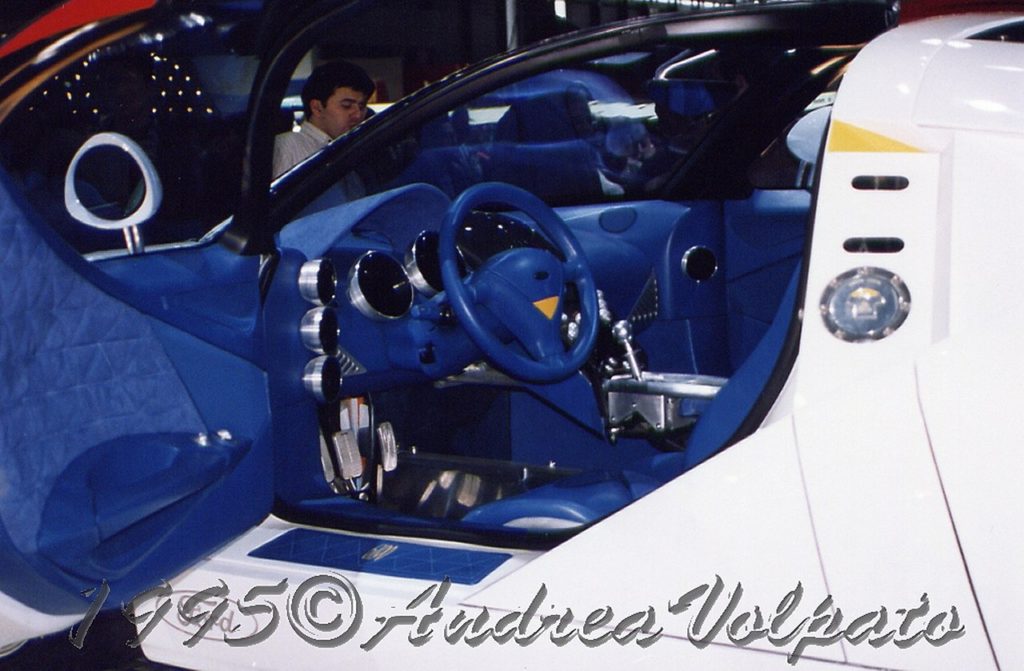
Inside the GT90, Ford created a driver-focused cockpit that balanced futuristic elements with functional motorsport-inspired design, featuring a distinctive oval-shaped instrument binnacle housing a full complement of analog gauges despite the otherwise future-forward design approach. The minimalist cabin wrapped around the driver and passenger with carbon fiber and leather surfaces creating a purposeful environment focused entirely on the driving experience, with few concessions to luxury beyond supportive racing-inspired seats. Most controls angled toward the driver in aircraft fashion, while the prominent center tunnel housed the manual shifter for the six-speed transmission, completing an interior that—unlike many concepts with fantastical cabins impossible to produce—actually previewed realistic supercar interior design trends that would appear in production vehicles a decade later.
1. Renault Avantime (Exterior)
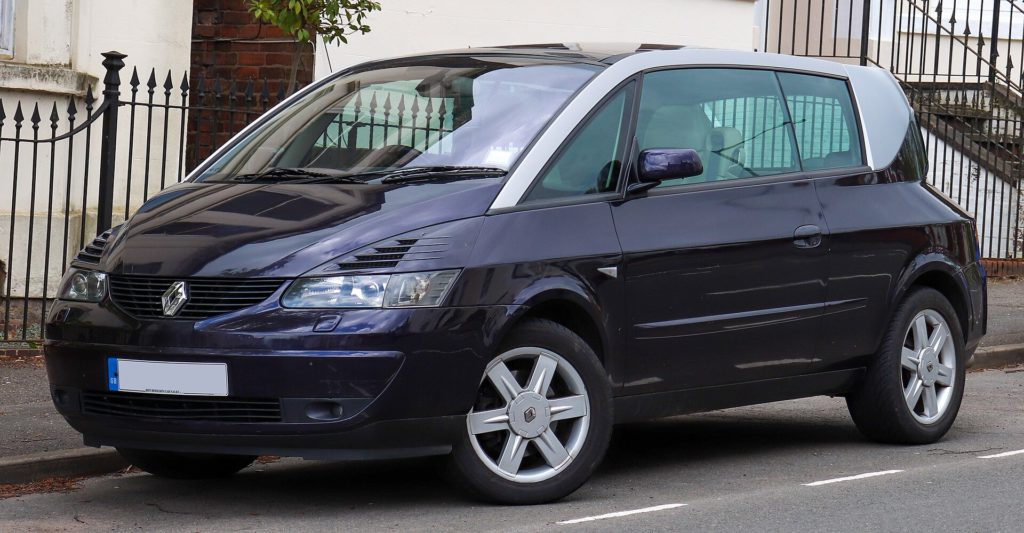
The Renault Avantime’s exterior represented automotive design at its most defiantly nonconformist, combining a minivan’s tall greenhouse and substantial footprint with grand touring coupe styling cues including a dramatically raked windshield, pillarless side glass, and just two massive doors for a vehicle capable of seating five adults. These enormous doors—each nearly five feet long—featured a double-hinge mechanism allowing them to open in tight parking spaces without extending beyond the vehicle’s footprint, addressing a practical concern while creating an entirely new problem: each door weighed so much that operating them required significant effort. The overall design created a vehicle with unmistakable presence and absolutely no direct competitors, featuring an unusually tall beltline, distinctive vertical taillights, and a silhouette that looked like nothing else on the road—proving that sometimes the most interesting vehicles emerge when designers ask questions no one else thought to pose.
Renault Avantime (Interior)

Inside the Avantime, Renault created a cabin as unconventional as the exterior, featuring theater-style elevated rear seating behind the front passengers and an enormous glass area including a panoramic sunroof that flooded the interior with natural light. The dashboard presented a clean, architectural design with high-mounted controls and displays creating an open, airy feel enhanced by the absence of B-pillars when the windows were lowered, effectively transforming the cabin into a semi-convertible experience. Despite its coupe styling, the interior provided genuine space for four adults in substantial comfort, with high-quality materials throughout including supple leather and real aluminum trim—though accessing the rear seats required an awkward dance around those massive front doors, highlighting how the Avantime’s determination to blend minivan practicality with coupe aesthetics created compromises that ultimately satisfied neither family buyers seeking convenience nor enthusiasts looking for sporting dynamics. All in all, the 1950s were a goldmine of automotive experimentation, resulting in both iconic classics and astonishing flops. For more, check out these forgotten 1950s cars that were actually disasters.









